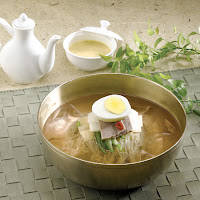 |
| Democratic United supporters crowd Busan Station |
 |
Presidential hopeful Moon Jae In of the Democratic United Party
makes his final campaign in Busan on Dec. 18
|
Campaigns for South Korea's 18th presidential election were in full swing in Busan tonight, with only hours remaining on the clock before the opening of the polls tomorrow, December 19th. Candidate Number 2, Moon Jae In, the leader of the opposition Democratic United Party (DUP), arrived at Busan Station at approximately 9:00 PM, greeted by a roar of applause and shouts from his supporters.


The party faithful arrived early to secure the best spots for viewing the action and to catch a glimpse of their political hero. Dressed in layers and heavy winter gear to battle the negative temperatures, supporters jumped and waved before Moon's arrival not just out of excitement, but for warmth. Many sported scarves, hats and jackets in the bright yellow and green colours of the DUP. Supporters of all ages braved the cold to see Moon, and they waved banners, balloons, and over-sized taegukki, the flag of South Korea. Elderly men shook their fists in support, their skin cracking against the cold, while young fathers hoisted their babies onto their shoulders so that they too could see commotion. Mothers, daughters, and granddaughters clung to one another, their faces wrapped in masks and their hair covered in hoods. Couples young and old smiled and shouted to one another, and families seemed to group together, their children bouncing with anticipation.

News crews orbited the stage and reporters shed their winter coats for the camera, standing stoic in their suits despite the wind chill. All around them shouts and laughter could be heard; music blaring, and flashes popping. A hush fell over the crowd for just a moment as Moon finally arrived in view, and was followed instantly by an uproar of screams, whistles, and chants. "Moon Jae In, Daetongryong! Moon Jae In, President!" they shouted as every man, woman, and child was swept up into the excitement. "100%!" they promised and "Vote, vote, vote!" they pledged to a smiling Moon, waving with a black-gloved hand.


He approached the stage built into an 18-wheeler truck and outfitted with a large screen. "Friends, thank you!" he greeted them in the honorific form, bowing and smiling. He looked into the audience, his grey hair shining and his face glowing against his yellow parka. He began to speak, pausing every few minutes for applause and the spontaneous cheers that erupted from the crowds. All around people balanced on tip-toes and stretched their necks for a glimpse of the presidential hopeful. Shutters snapped and smart phones could be seen held high over heads, recording every moment. "People come first," his campaign boasts and in this moment, people were united by his promise.
 |
Flashing the number 2 and the party colours
in support of presidential hopeful Moon Jae In
|
As neared the end of his speech, Moon's voice cast out over his increasingly joyful crowd who roared with delight at his every syllable, their applause thundering as he implored them to vote. "100%! 100%!" came the cries again, as Moon accepted flowers and posed for photos before he was escorted off stage by his smiling aides. The Korean national anthem followed, every member singing, swaying, and hugging; hands on hearts or in the air, their fingers shaped in a peace sign to represent the number two, for candidate Moon Jae In. Only moments later, one last burst of energy was summoned and a dance party broke loose as soon as a loud, thumping, upbeat melody filled the air. Teens twirled while seniors shuffled but everyone felt compelled to move in some way. The dancers, the singers, and all the supporters were thanked once again before they scattered, rushing to the train and subway stations, excitement not yet fading. Costumed workers reminded everyone to vote before dashing off to seek warmth for themselves. And just like that, it was over, the trucks and clean-up crews having removed nearly every trace of the event within twenty minutes of its conclusion.
 |
Colourfully dressed workers implore citizens to vote!
|
Of course, the main event is yet to come, and nothing certain is concluded just yet. Will the victor be Candidate1, Park Geun Hye of the ruling Saenuri Party, Candidate 2, Moon Jae In and the Democratic United opposition, or a surprise victory from the independents? Along with the citizens of Busan and the rest of the country, I eagerly await the results of this, the 18th presidential election of South Korea.
Readers, what do you think? Who will win the election and where would you cast your vote? I'd love to hear your comments!
Read more about election campaigns in Korea here:
Korea's Campaigns Bring New Meaning to the Term "Electoral Party"
































































